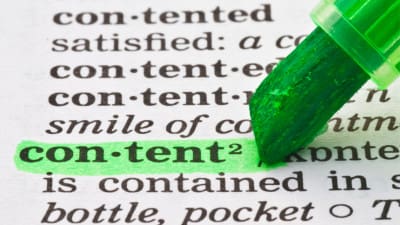Ever since the dancing baby GIF hit the scene in the late 90s (which some of you may be too young to remember), the world has been fascinated by GIFs. And with the rise of social media, that fascination has evolved into full obsession. In fact, reaction GIFs have become a popular way to communicate thoughts and emotions without ever saying—or typing—a single word. (Just ask former President Obama, who’s illustrated mic drop was ranked number one on Variety’s list of the most popular GIFs of 2016.)
But GIFs are more than the equivalent of visual one-liners. They can actually be a powerful storytelling tool for digital journalists.
Also on Mediabistro


The Multimedia Journalist’s Guide to GIFs
In an article for ProPublica, Lena Groeger did an excellent job of explaining not only the history of GIFs (the earliest iterations of the technology date back to the 1800s), as well as the science behind them. Apparently, the human brain loves the comfort of predictability, whether it’s a favorite song that plays incessantly on the radio or a looping image of a cat filing its nails (which is totally a thing). And it’s this intersection of science and technology that can truly revolutionize digital journalism.
Natalie Dudas-Thomas, social media producer at WGBH, Boston’s National Public Radio member station, agrees. “The use of GIFs in journalism is still in its infancy, but now more than ever we need to find new ways to share our stories on social media,” she says. “GIFs give journalists the tools to illustrate their content in a digestible format, making the story accessible to people who may not have time to read the full article.”
In addition to increasing accessibility, GIFs also have the ability connect to and resonate with audiences in a way that an article without multimedia sometimes can’t.
Consider this GIF that depicts Europe’s refugee crisis based on data from the United Nations:
via Fast Co.DESIGN / Lucify
Or this one that illustrated the harsh realities of Brazilian pollution in advance of the 2016 Olympics:
via PRI
“A moving map or graph will catch someone’s eye much more than a static map graphic would,” says Dudas-Thomas. “An [animated] illustration of a sensitive topic you’re covering in your story may elicit a more emotional response on social media than a static image or longer video.”
Groeger’s article had a direct impact on Steven Davy, multimedia editor at PRI’s The World, who began seriously thinking about GIFs as a journalistic tool after first reading it.
Davy and his colleagues began where most do, with content ripped directly from videos. It’s a formula that’s both easy and generally high-impact, but ultimately, the team challenged themselves to go even further. And after a discussion with an illustrator about the power of hand-drawn images, Davy suggested that the PRI team begin creating their own GIF images.
Learn how to identify multimedia content trends with our Digital Journalism course—register now.
“We were combining two ideas at once: the idea of something hand-drawn and this looping idea that a GIF does natively,” Davy explained. “So we started adding layers of journalism on top of promotional material by taking some of the reporting and inserting into the GIFs as conversation starters.”
Animated images were certainly a part of this strategy, but not always. Expanding on the popularity of quote boxes that had been shown to increase engagement on social platforms like Twitter, Davy’s team also began using GIFs to create extended quotes that were both optimized for social media and able to stand alone in the advancement of a story.
Practical Considerations for Effective Multimedia Journalism
GIFs can certainly create a world of possibilities for the savvy digital journalist, but as with any technology there are very real considerations that must be addressed, beginning with resource availability. “I think the biggest consideration is time,” says Davy. “We’re all kinda slammed as journalists, but the work is important.”
Money is certainly an issue too, and most journos don’t have endless budgets that they can allocate for designers and animators. The good news is that there are free tools like Giphy or GIF Brewery that simplify the process for those without a design background or expensive software. And for those with a little cash to spare, Dudas-Thomas recommends “thinking beyond the newsroom” and tapping local artists or illustrators to create compelling images.
Copyright infringement is a potential risk, and sourcing material is always the best safeguard if you didn’t do the reporting/creation yourself. But, says Dudas-Thomas, ensuring your GIF effectively communicates your intended message is just as important. “The biggest risk you run into when using a GIF is making sure you get the tone right,” she explains. “And make sure your GIF still makes sense if taken out of context—[when] removed from the tweet you posted it with and shared somewhere else.”
Something that should probably not be considered, however, is the potential for a GIF to go viral. “Sometimes you hit a note online, and the story just kind of takes off,” says Davy. “Other times, it’s just the work of a journalist, and a story is important for the higher ideals of journalism.”
In other words, sometimes you just need to do the work that will ignite dialogue around meaningful topics.
Editor’s Note:
On March 13, Davy and Dudas-Thomas will join Katherine Griwert, FRONTLINE PBS’s Audience Engagement Editor, on a SXSW panel to further discuss how GIFs can help advance journalism.
For more on taking your online journalism skills to the next level, enroll in our Savvy Digital Journalism course today.



.png)





